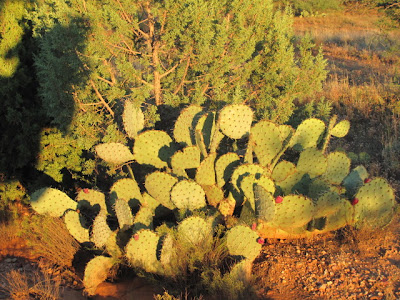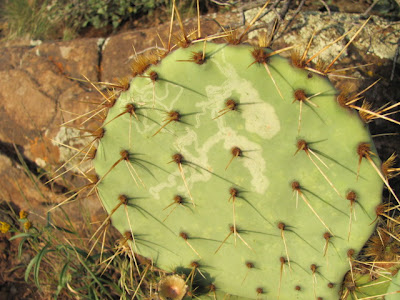
I saw this in a small park next to what looked like unmanaged desert on the way back to Phoenix, right off of I-17. There were literally dozens of them when we drove into the park, scampering to safety before we could even hop out of the jeep. Luckily, I found this one hidden in a mess of cholla, or Cylindropuntia.
That genus name should be vaguely familiar. Cylindropuntia literally means cylindrical Opuntia. Indeed, for some time chollas (pronounced CHOH-ya) were considered members of the Opuntia genus, but the absence of paddle-like stems has finally merited its own genus.
Above, a small cholla, no more than 24" high. I am stumped about which species of Cylindropuntia this is. It looks quite a bit like C. tunicata, but that's native to Chile and I doubt this plant is an invader, they were ubiquitous in Arizona. If it was an invasive non-native, I'm sure I'd have figured this out via books or websites. C. spinosior is the most common cholla in Arizona, but this looks too hairy or spiny to be considered a member of that species. Frankly, to go along with the thematic 'cuteness' of bunnies, I'm hoping this is C. bigelovii, or teddy bear cholla.
There are 22 species of Cylindropuntia in the United States, so chances are this specimen is none of the above. Though seeing a common name like teddy bear cholla (called that because from afar the plant looks more fuzzy than spiny).
Happy Friday!




































